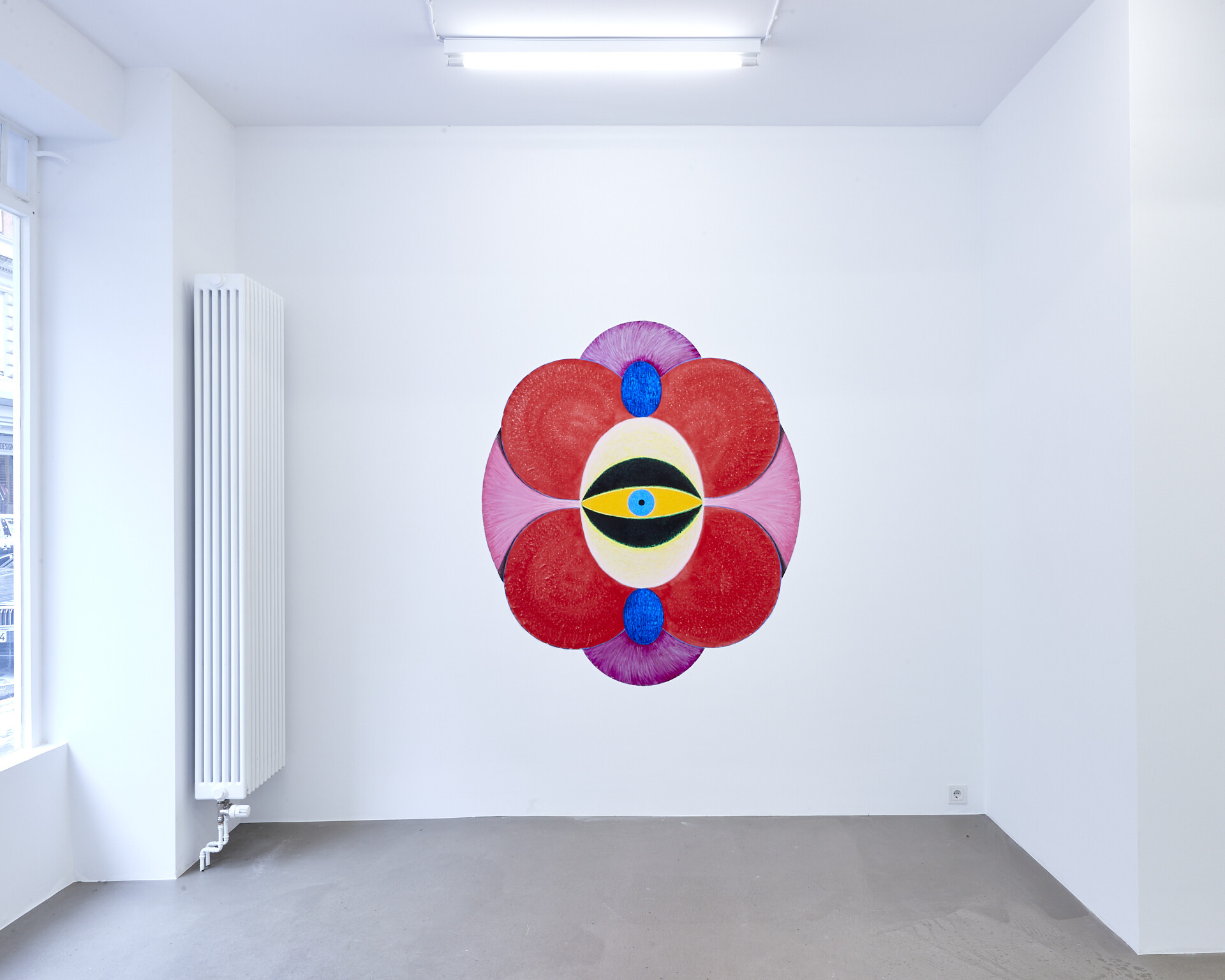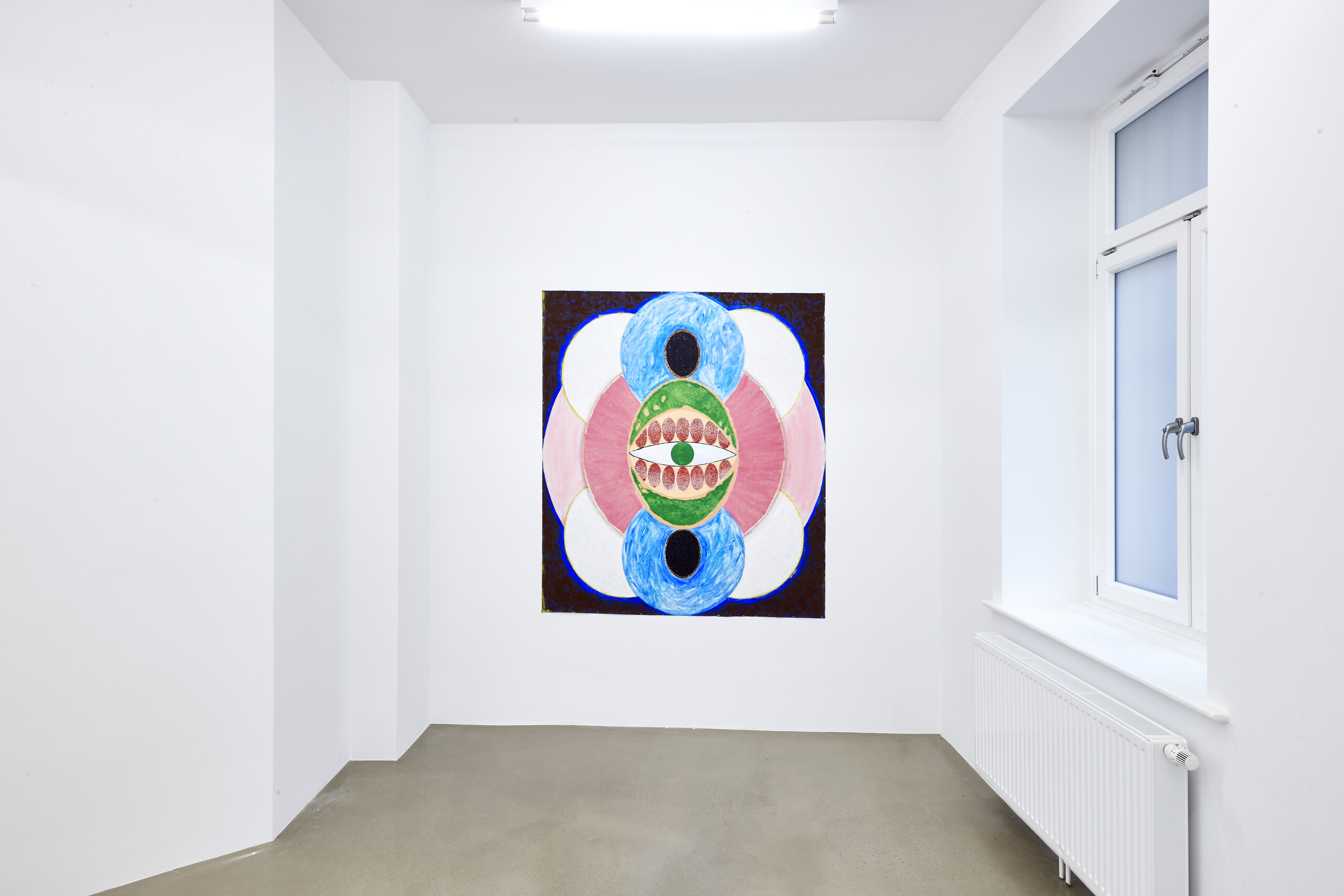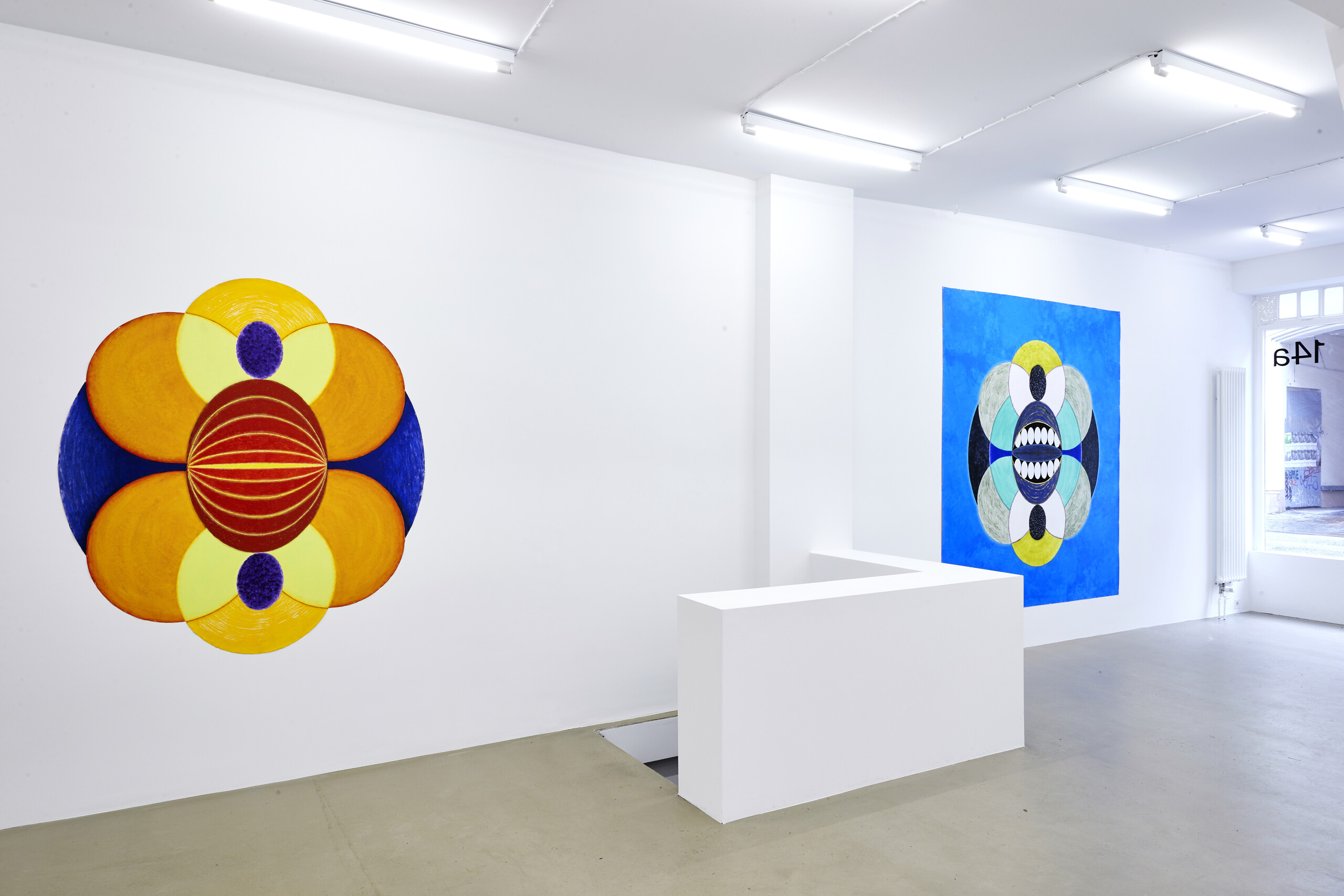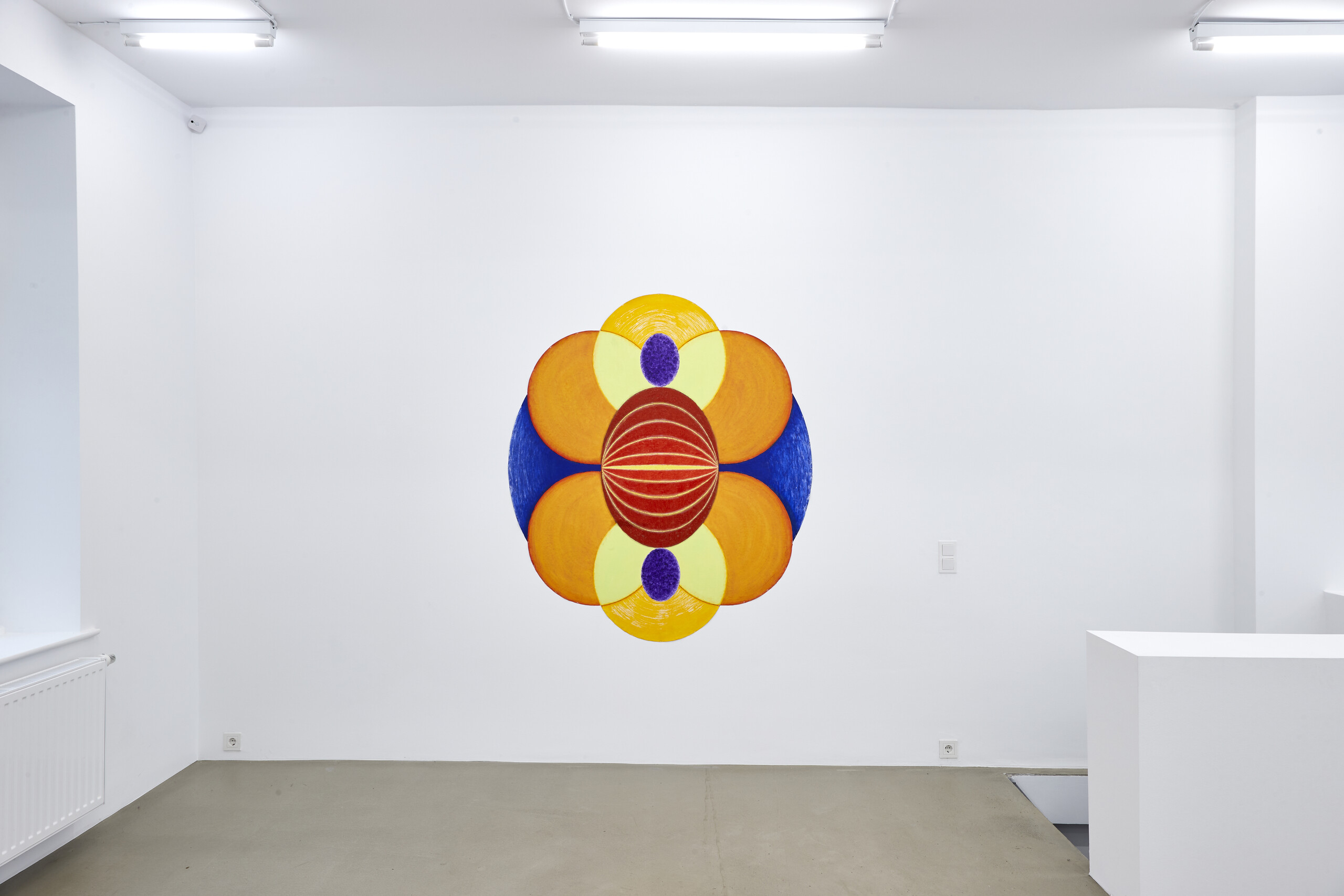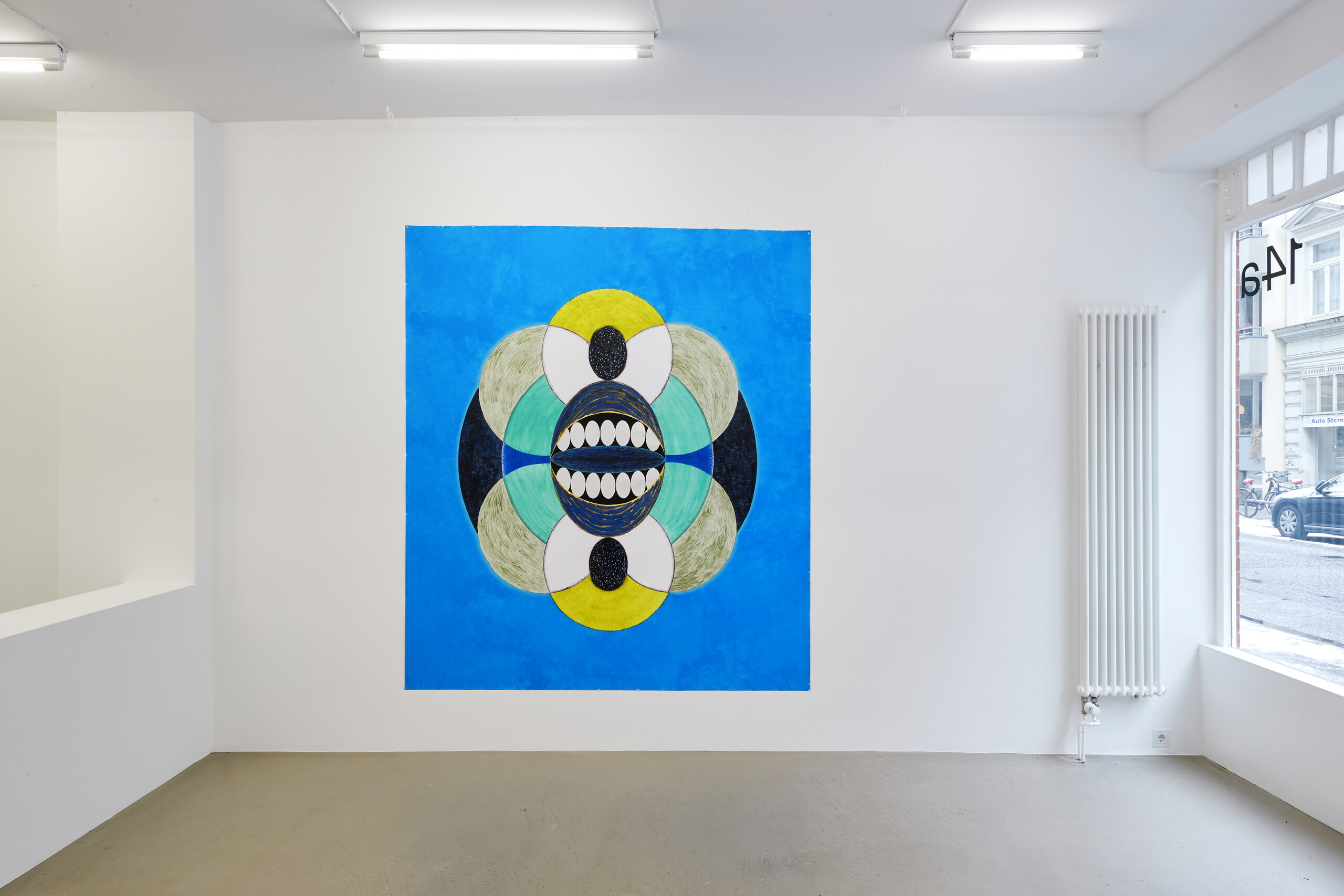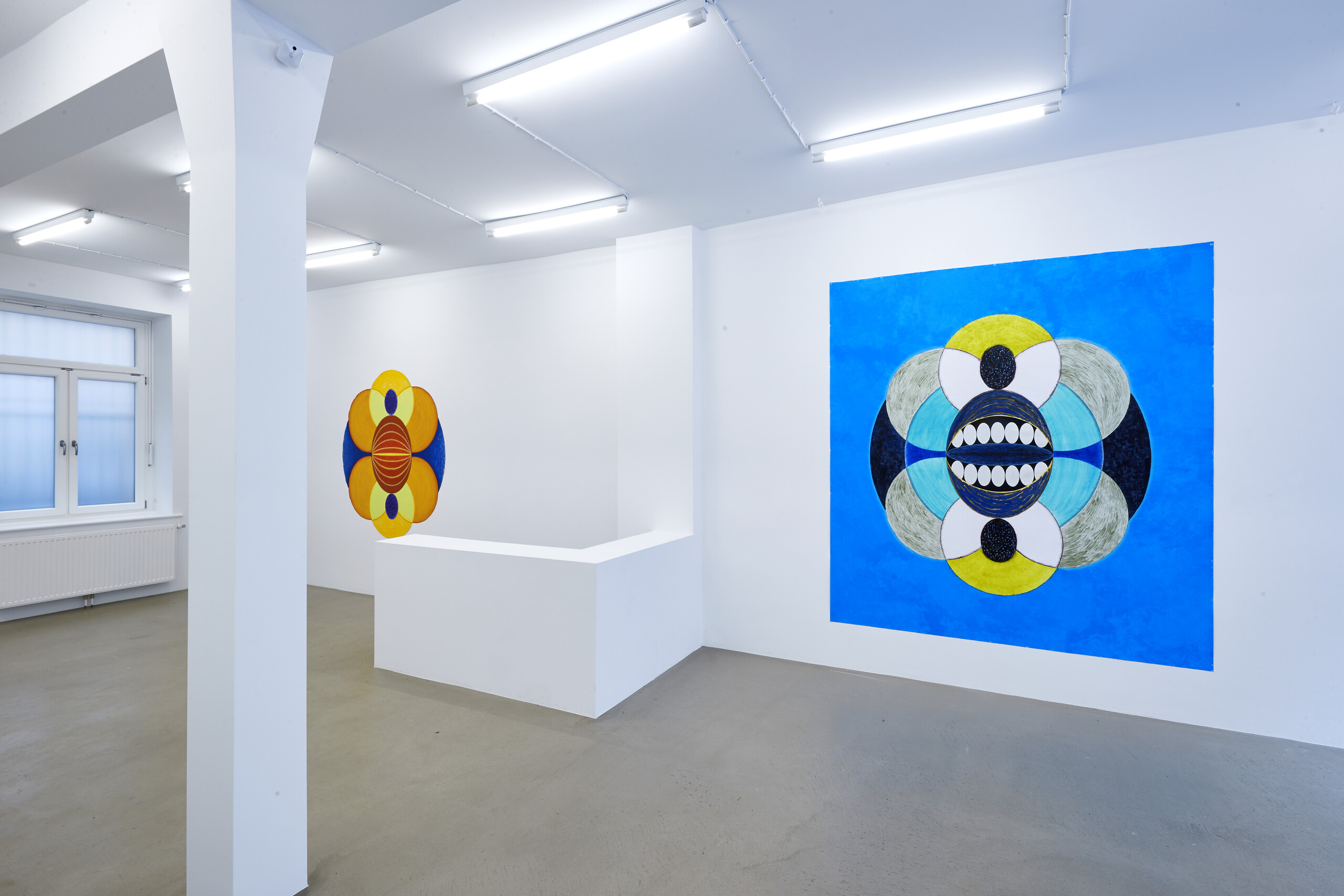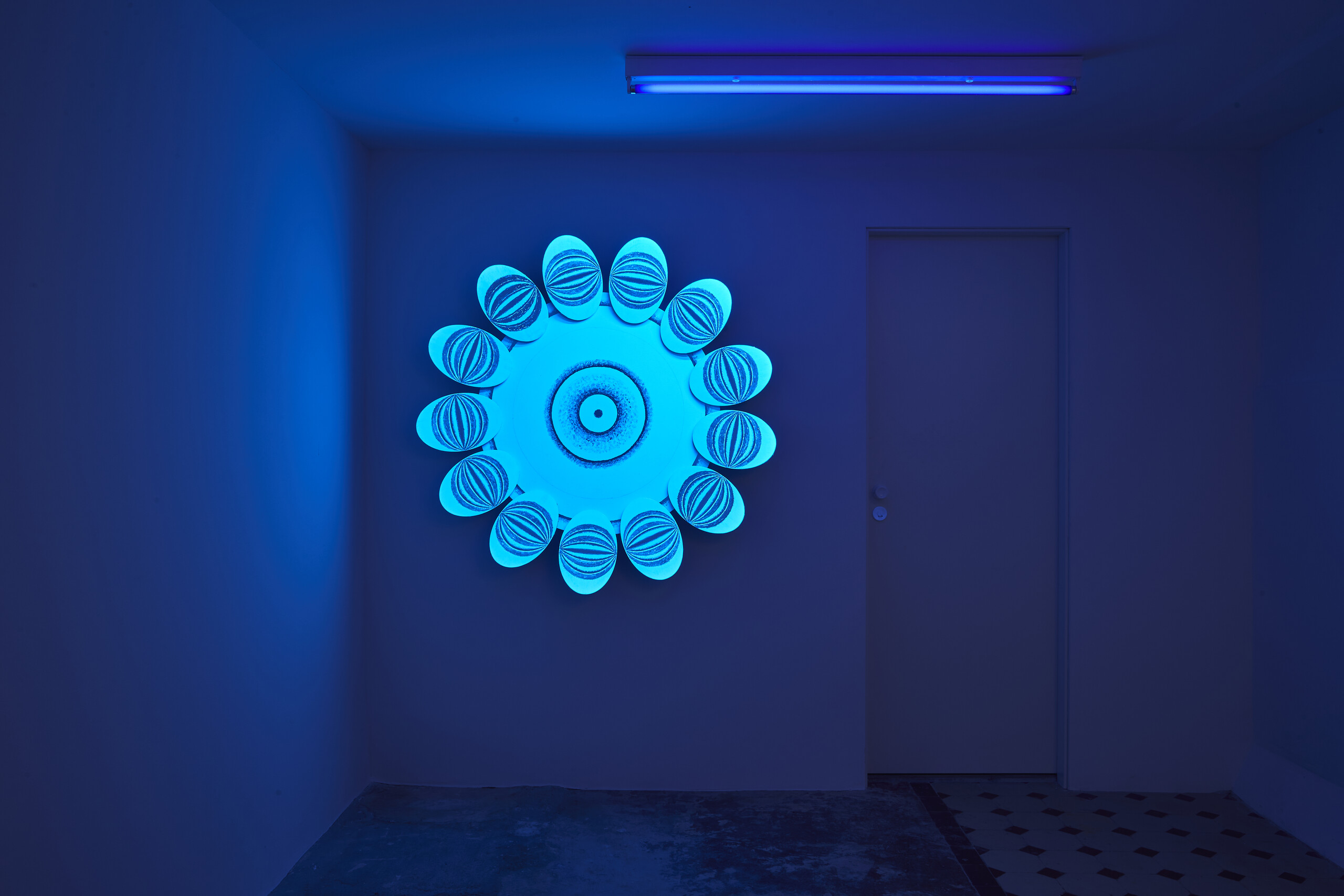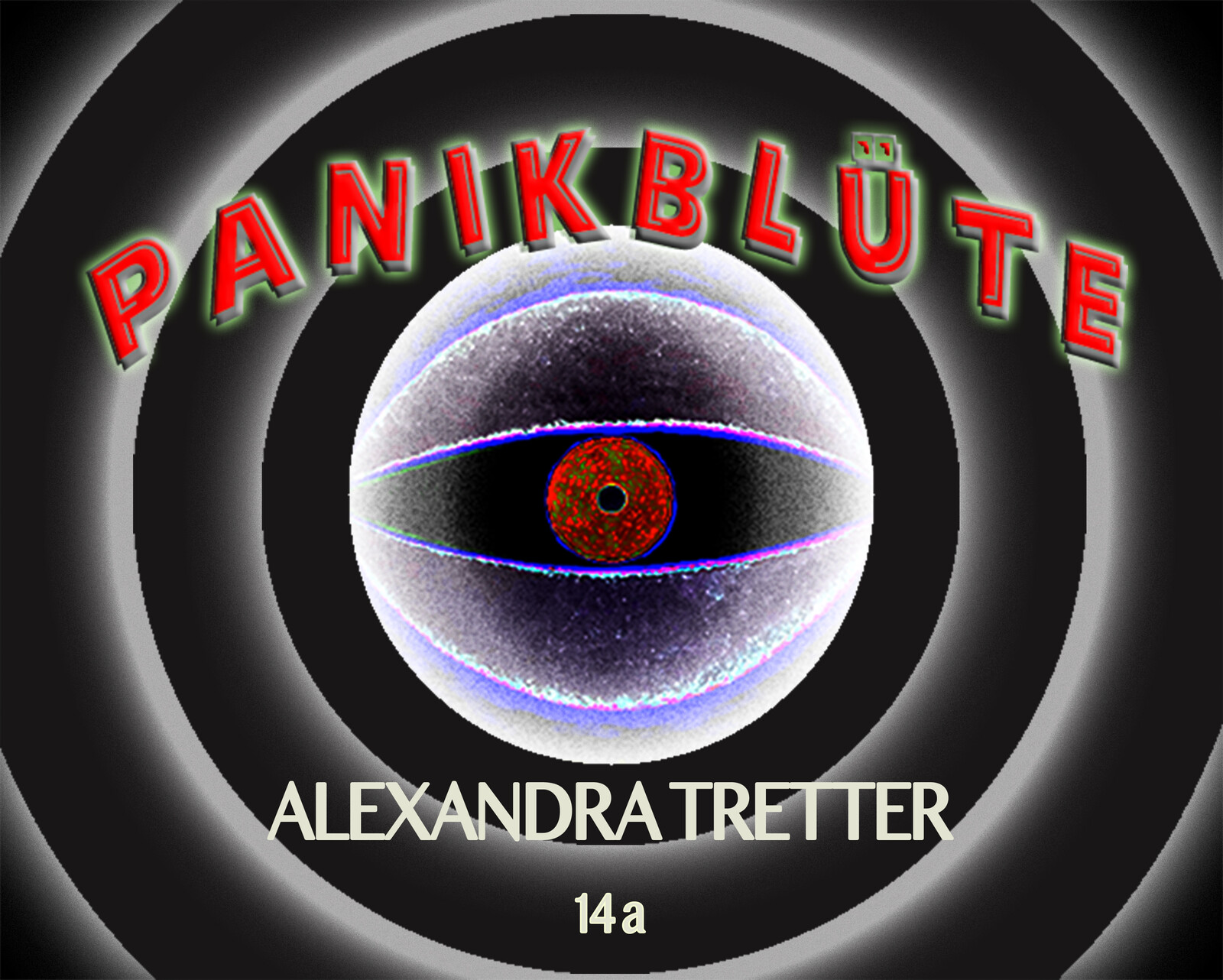Text by Alexandra Tretter
Can you hear the opening of the blossom the moment the first sunbeam falls on it? Can you hear the quiet after the last breath of air?
My first solo exhibition at 14a is titled Panikblüte (engl.: panic blossom). A title I borrowed from an illustrated book that my mother kept for many years. The book looks into the great agricultural, ecological and human devastation of Bitterfeld—A city known for being the largest chemical site in the former DDR. Bitterfeld was one of the filthiest cities in Europe and also happens to be my hometown. While journalists and authors undertook research to make the book, it was my reality. I remember how the air used to be sulphur yellow and the lake would shimmer unnaturally silver. In Botany, the term Panikblüte describes the phenomenon of the final blossoming of a diseased tree shortly before its death.
Some of these blooms are shown in this exhibition as large-format acrylic on linen pieces. The central and recurring motif in my paintings, which has nested itself into my work rather intuitively is an oval in which multiple symbols such as an egg, a mouth, an eye or a vulva coalesce. Just like independent beings they appear in one form or they meld together into one organ as seen in Pflege (Care). This cluster is derived from my personal experiences as a human amongst humans, but especially as a woman in the modern world. The clusters symbolize single or repetitive moments within my biography. For example, the motif of the mouth refers to my upbringing, in which the fear of saying something wrong conditioned me to keep my opinion to myself. This mindset accompanied me during my career as a model where my devotion to keeping still put my entire body in a state of torturous silence for years.
The setup of the paintings is carried out axially-symmetrical (horizontally as well as vertically) whereby the entities are placed in the centre of the painting to set the compositional tone. Semi-circular and circular areas unfold around them revealing the complete picture. To me, these areas reflect metaphorical packages that everyone carries through life - some are more tangled up with one’s self, and some less. At the same time, these compositions function as a sort of airbag that shields these entities from external dogmas. In fact, the juxtaposition of freedom and the need for protection was the starting point for this body of work. It was only during the process of working on this exhibition that I noticed the resemblance between my forms and flowers in bloom. Their individual segments are set apart from one another by varying paint applications that appear to be either wet, dry, soft, hard, fluffy or greasy. In addition to using paint brushes, I use a spatula, a softball or my fingers. Imperfections and rubbings on my studio walls show up as imprints in the linen, lending textured impressions of surface. All of this, as well as the intense coloring, is created through my desire for opening up a space so the motifs can unwind in hopeful harmony and cry out with instant concentrated vivacity. While the forms and ovals remain consistent in size, the backgrounds of the paintings vary. Two of the exhibited flowers are anchored within a rectangular format whereas one of them seems to have reached its limits suggesting that it has no more space to expand, grow or develop. The other, however, has more space. So the question arises, does she even want to take this place at all? Does the feeling of freedom result from the mere offer of opportunity to unfold?
Two other flowers in the exhibition have been cut free from their background, straying from the classic image format. As all of my works since 2020, the paintings are not stretched on stretcher frames during the creation process or when they are presented, but pinned directly to the wall. For me, this makes them a part of the space and allows them to break away from the idea of the painting as furnishing landing somewhere between a mural and a panel painting. This fluid understanding of my image carriers corresponds with the ambiguity of my pictorial elements. Simone de Beauvoir once said that one is not born as a woman but is only made one socially. In her time, the ideal was being a doll, today it’s the highpowered career woman.
Honestly, I’m bored of both.
I am far more interested in the rainbow that lies between black and white.
From it, little by little, a new perspective will sprout, able to open our view to our innermost being.
Don’t panic.
Spring is coming.
– Text by Alexandra Tretter
